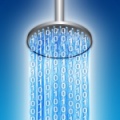 One essence of wireless communication does not change: the reliance on spectrum availability. The frequency spectrum is endowed with different features and characteristics that make trade-offs a necessity. One trade-off is that between data rate and mobility. The lower part of the frequency spectrum which is most amenable for mobile services due to economic reasons aggregate in a few gigahertz below the 6 GHz band. By comparison, the entire 60 GHz band features up to 9 GHz of spectrum where atmospheric absorption limits the range of propagation to short distances. As bandwidth correlate with throughput, we achieve much higher data rates at the higher frequency bands which are unfortunately less amenable to mobility services. So, how to bridge this divide?
One essence of wireless communication does not change: the reliance on spectrum availability. The frequency spectrum is endowed with different features and characteristics that make trade-offs a necessity. One trade-off is that between data rate and mobility. The lower part of the frequency spectrum which is most amenable for mobile services due to economic reasons aggregate in a few gigahertz below the 6 GHz band. By comparison, the entire 60 GHz band features up to 9 GHz of spectrum where atmospheric absorption limits the range of propagation to short distances. As bandwidth correlate with throughput, we achieve much higher data rates at the higher frequency bands which are unfortunately less amenable to mobility services. So, how to bridge this divide?
The ability to communicate at very high speed (gigabit per second) over a short distance has opened the door for “information shower,” a concept discussed in academic circles[1], where a zone equipped with a ultra-high frequency transmitters in 60 GHz band (and potentially higher bands that are also subject to atmospheric absorption such as the 180 GHz band where about 18 GHz of spectrum is available) can in very short time – order of milliseconds to a few seconds – transfer huge amount of data to a user device. For example, a very basic transmitter of 1 b/s/Hz of spectral efficiency making use of 7 GHz of spectrum in 60 GHz provides 7 Gbps of throughput: good enough to download an average high-definition 1080 dpi movie in about one second.
Such stations can be placed in different locations to cater to pedestrian traffic (integrated into buildings at entrances or in elevators; placed near check-out lanes in supermarkets, bus and train stops, etc.) as well as to mobile traffic with transmitters positioned at intersections with traffic lights, gas stations, etc. The idea is that in a split second, the user’s entertainment, communication and information systems are updated with the latest of the user’s requirements.
Such a system is not unfeasible and makes economic sense especially when it comes to in-car digital information and entertainment. It is in this specific application that the information shower concept departs significantly from the “hot spot” concept associated with a WiFi zone. Rather than stream multitudes of programs over the air which is taxing on bandwidth and spectrum, the user has the benefits of downloading large amounts of information and programs into systems that are integrated in the car.
Another aspect that works to enable the concept of information showers is the availability of optical fiber in most urban areas as fiber will be required to backhaul the information shower nodes to the core network. As carriers invest ever more into their fiber infrastructure, new applications that leverage the use of this infrastructure are welcome new sources of revenue.
Making use of spectrum properties to develop new services is a worthy endeavor, but there’s no telling of what the future will be bring in the form of successful applications. In the early days of mobile data communication (that’s the early 2000’s), NTT Docomo’s I-mode service set the pace for data service programs and served as a model to be emulated, but no one at that time has foreseen the iPhone and other smart phones as well as Facebook, twitter and other social media services which combined with advances in hardware has revolutionized the industry. Information shower networks are one possible answer on to how to get large information of data to ever more mobile world. It does that by leveraging the high capacity of the higher spectrum bands and ever lower cost of memory to localize transmission points thereby reducing the need for ever-present connectivity.